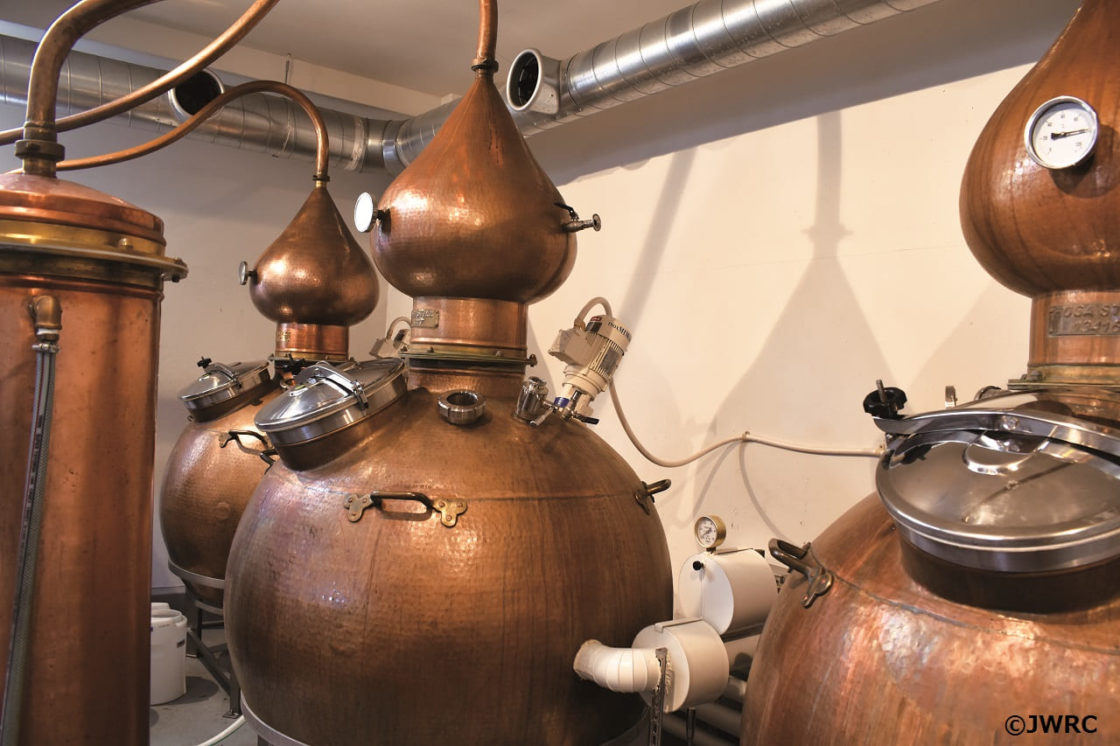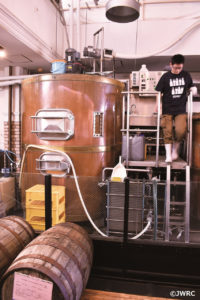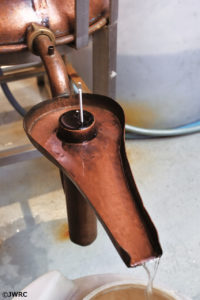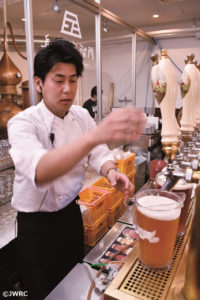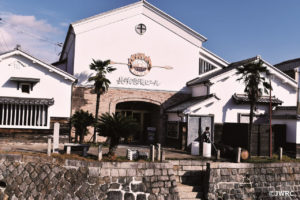Situated on a levee of Lake Biwa is Nagahama, an inn town previously built up as part of the water transport in the area. The Nagahama Distillery was established in this town steeped in history. With their first single malts released just last year, what makes their “one batch, one cask” whisky unique?
Header image: The gourd-shaped Alembic stills. Depressions on the surface increase the contact area of the copper, reportedly giving a richer and cleaner flavor.
Text: Whisky Galore
Images: Mamoru Tsuchiya
Translation: Whiskey Richard
Beginning with two stills, in 2018 the operation added a third, meaning they now have two wash stills and one spirit still. One batch begins with 400kg of malt, and from mashing to fermentation, the processes are shared with beer. They use both non-peated beer malt from Germany and peated malt from Scotland. Last year they also ran experimental batches with Six-row barley grown in Shiga prefecture, and this year they plan on trying out two-row barley grown in Nagahama itself.
They also work to source a wide variety of casks to be used for maturation, such as Islay quarter casks, Chardonnay, Fino Sherry, and casks from Koval in the US. Their much-awaited first release of single malts last year consisted of three varieties: Bourbon barrel, Oloroso sherry (1 year in Bourbon barrel, 2 years in a sherry quarter cask), and a mizunara cask. The next releases in November were Bourbon barrel, Oloroso sherry , and an Islay quarter cask (8 months in a Bourbon barrel, then an Islay quarter cask). Each were single-cask, cask-strength releases.
The “Amahagan” series, released prior to their single malts, has also been popular. It’s World Blended Malt whisky, where imported malt forms the base, which is then blended with Nagahama’s malt. There’s plenty of variety in casks in this lineup too, like red wine, Mizunara, and sakura cask finishes. The company says that while they haven’t been able to participate in events due to COVID-19, recent hires of young staff has allowed them to focus more on production. Japan’s smallest distillery should offer some unique products to enjoy this year too.

Mamoru Tsuchiya is Japan’s foremost whisky critic. He is the Representative Director of the Japan Whisky Research Centre, and was named one of the “World’s Best Five Whisky Writers” by Highland Distillers in 1998. He served as the whisky historian for NHK’s Massan and he has published several books such as The Complete Guide to Single Malt Whisky, Taketsuru’s Life and Whisky, and The Literacy of Whisky. He is the editor of the bimonthly Whisky Galore, Japan’s only print whisky magazine.

